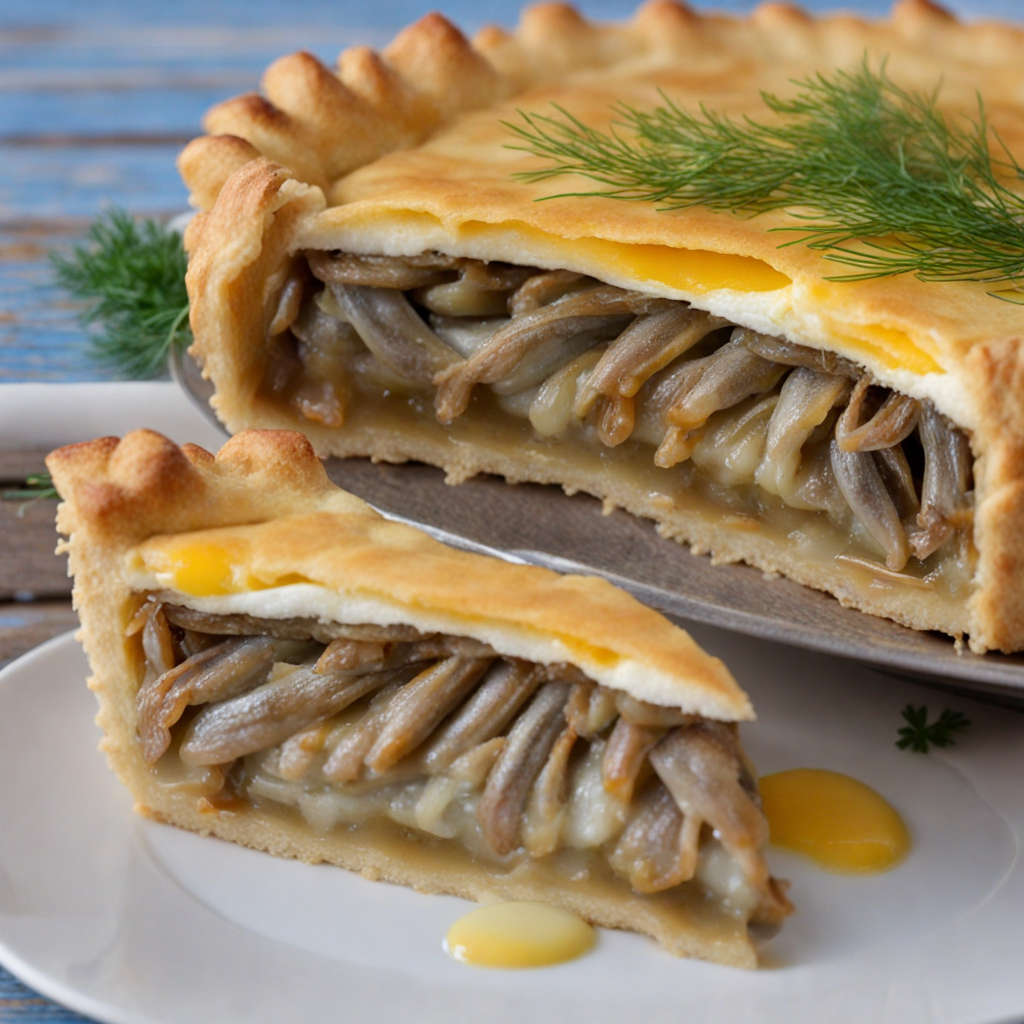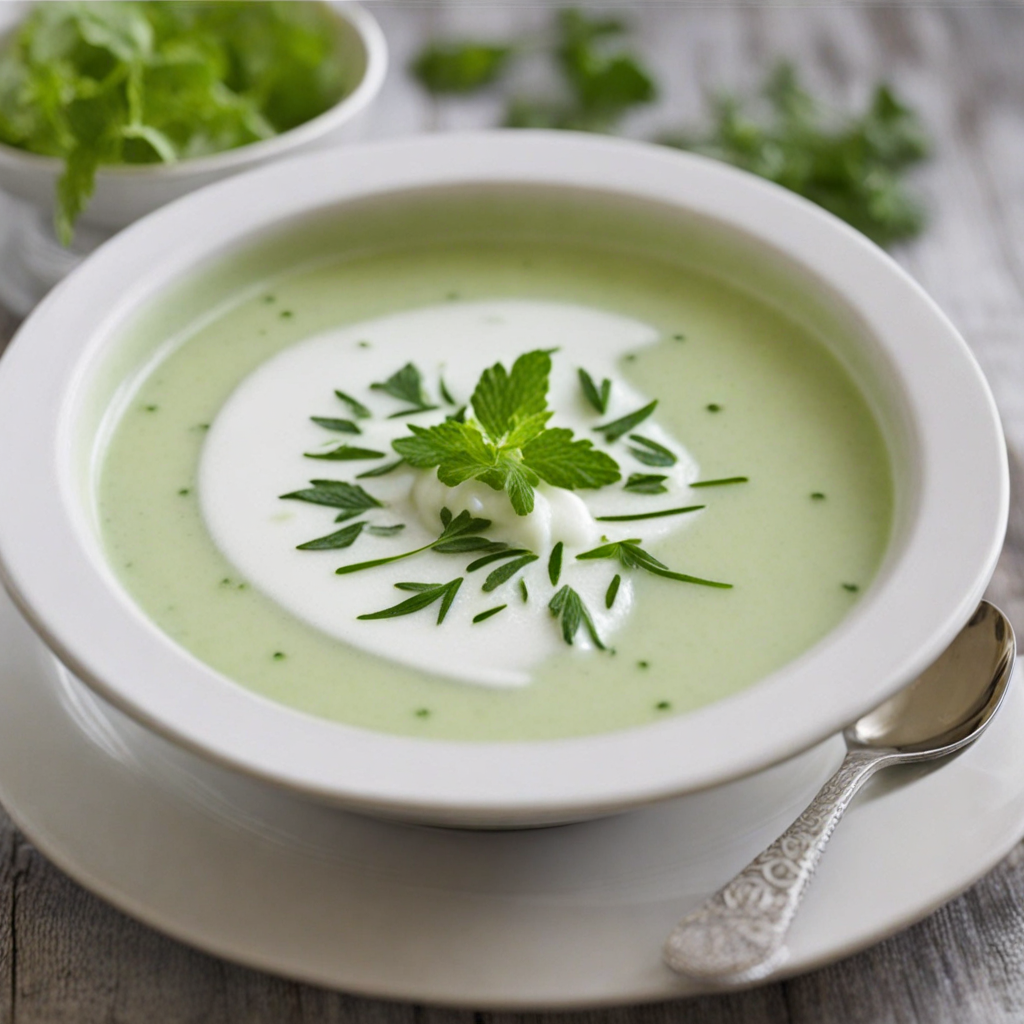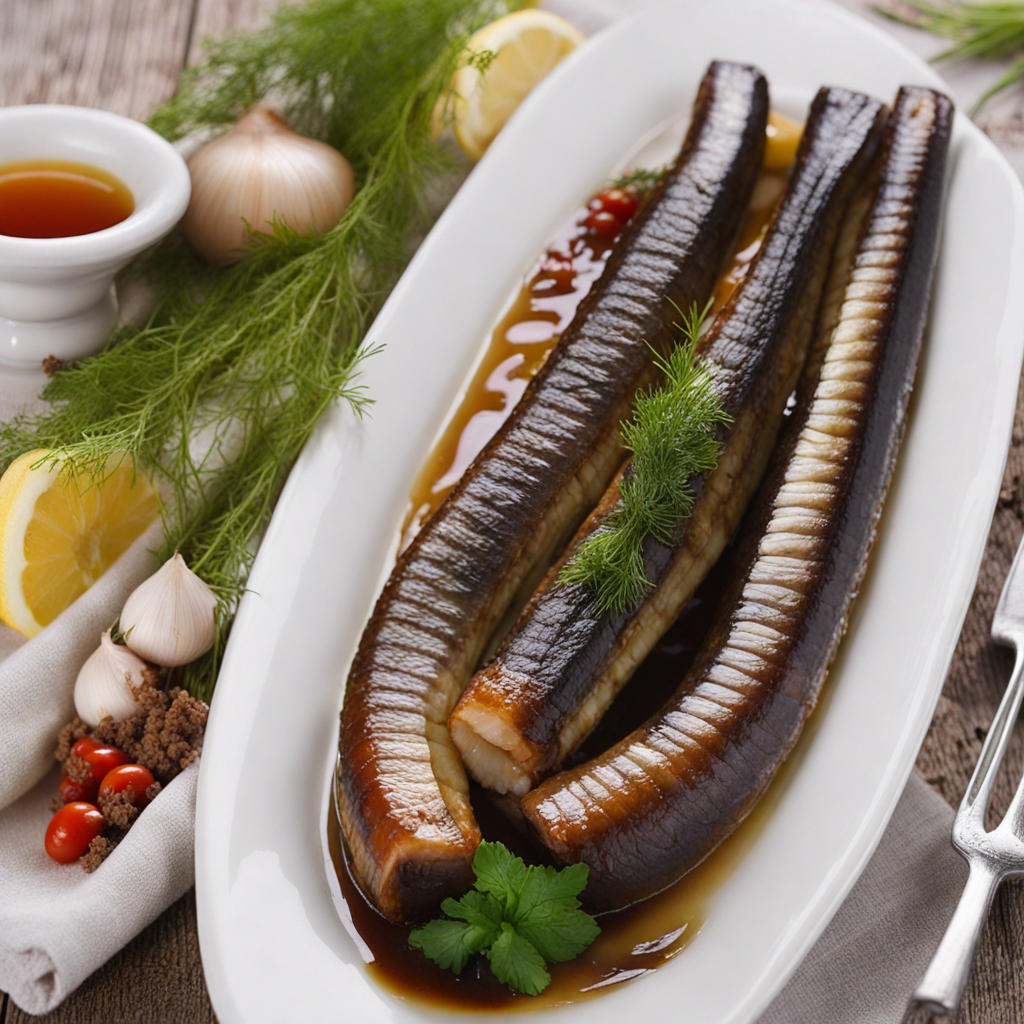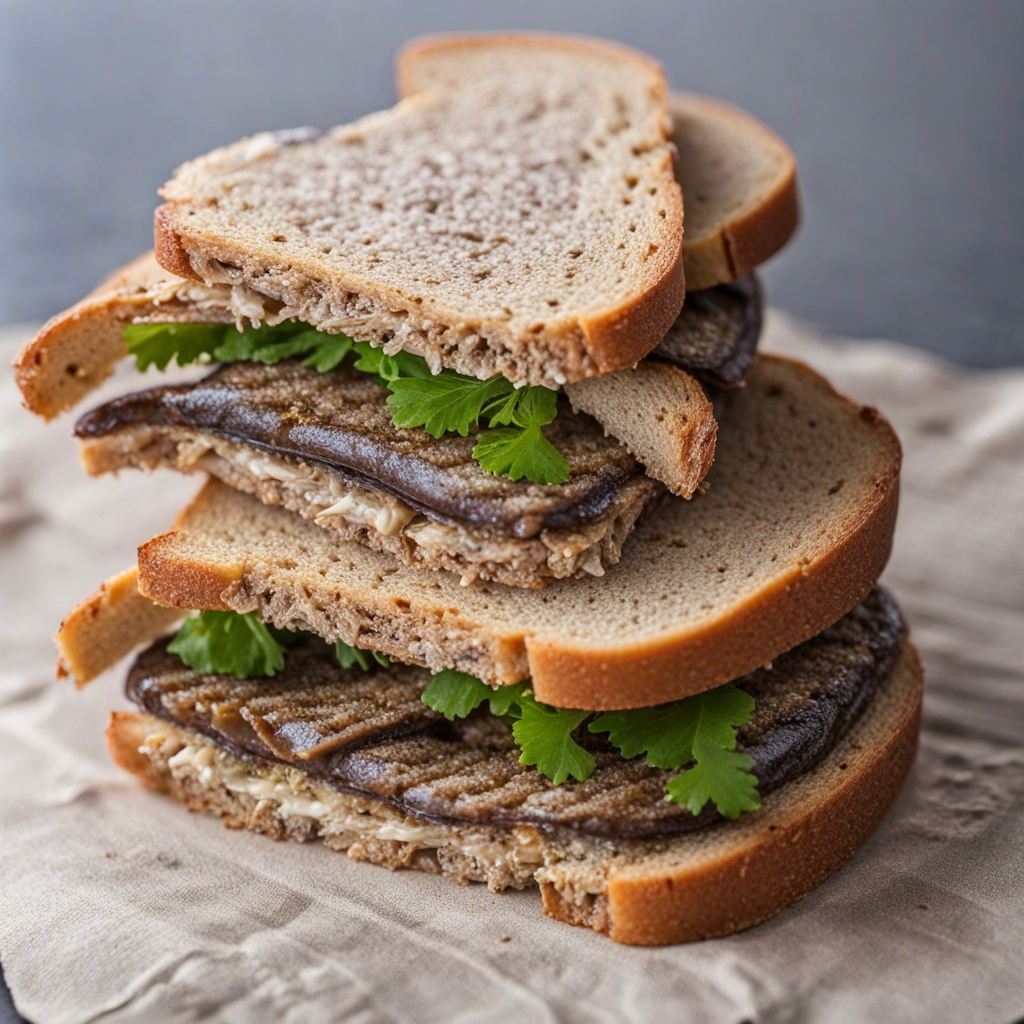Baltic Sprat Pie
Baltic Sprat Pie is a delightful Estonian dish that beautifully showcases the region's rich maritime heritage. This savory pie features Baltic sprats, small, flavorful fish that are a staple in Estonian cuisine. The sprats are typically marinated or smoked, imparting a unique depth of flavor that perfectly complements the flaky, buttery crust of the pie. The combination of the fish's natural saltiness and the crust's richness creates a harmonious balance that is both comforting and satisfying. The filling of the pie is often enhanced with onions, potatoes, and sometimes even cheese, which adds a creamy texture and additional layers of flavor. The onions provide a sweet and savory contrast to the sprats, while the potatoes contribute heartiness, making the pie a well-rounded meal. Baked until golden brown, the pie boasts a beautiful presentation, with the crust crisping up to perfection, enticing anyone who lays eyes on it. Served warm or at room temperature, Baltic Sprat Pie can be enjoyed as a main dish or a delightful appetizer. It pairs wonderfully with a side of fresh salad or pickled vegetables, which add a refreshing crunch and acidity, balancing the richness of the pie. Whether enjoyed at a family gathering or a cozy meal at home, this dish encapsulates the essence of Estonian culinary traditions, inviting food lovers to explore its unique flavors and textures.
How It Became This Dish
Kilupirukas: A Culinary Gem of Estonia Kilupirukas, a traditional Estonian dish, reflects the rich tapestry of the nation’s culinary heritage. These savory pastries, filled with sprats (a type of small fish), have become emblematic of Estonia's connection to its maritime resources, agricultural practices, and cultural identity. To understand kilupirukas fully, we must delve into its origins, cultural significance, and evolution over time. Origins: A Maritime Influence Estonia, situated on the northeastern edge of Europe, boasts a long coastline along the Baltic Sea. The abundance of fish in these waters has played a pivotal role in the diets of Estonians for centuries. Sprats, in particular, are small fish that thrive in these cold waters and have been a staple in the Estonian diet since ancient times. The fishing of sprats is not only a reflection of the region’s natural resources but also a testament to the ingenuity of its people in utilizing what was readily available to them. Kilupirukas can trace its roots back to the peasant food traditions of Estonia. The word "pirukas" translates to "pie" or "pastry," indicating a broader category of filled dough products. The origin of the kilupirukas, specifically, dates back to the late 19th and early 20th centuries, a time when fish preservation methods—such as smoking and canning—were becoming increasingly popular. This period saw the rise of industrial fishing, which enabled the greater availability of sprats and other fish. The combination of sprats with a pastry shell can be seen as a practical solution to food preservation and storage. The dough serves as a barrier, protecting the fish from spoiling while also providing a satisfying texture that complements the richness of the filling. Thus, kilupirukas emerged as a practical, nutritious, and tasty option for the working class, who could easily carry them for lunch or enjoy them during communal gatherings. Cultural Significance Kilupirukas is more than just a snack; it embodies the essence of Estonian cuisine and culture. It is often associated with communal and festive occasions, highlighting its role in social gatherings. The dish can be found at family celebrations, holiday feasts, and local markets, making it a symbol of Estonian hospitality and tradition. In Estonia, food is often intertwined with national identity and cultural pride. Following the country’s independence from the Soviet Union in 1991, there has been a resurgence of interest in traditional foods as a way to reconnect with Estonian heritage. Kilupirukas, with its roots in local ingredients and traditional cooking methods, has been embraced as a quintessential Estonian dish. Moreover, kilupirukas is often enjoyed with accompaniments that further enhance its cultural significance. Typically, it is served alongside pickles, sour cream, or dill sauce, showcasing the importance of preserving and complementing flavors in Estonian cuisine. These accompaniments often reflect the broader culinary traditions of the region, which emphasize the importance of seasonal and local ingredients. Development Over Time As Estonia evolved throughout the 20th century, so too did the kilupirukas. The post-World War II period brought about significant changes in food production and consumption, particularly with the influence of Soviet-style collective farming. While this era saw a decline in artisanal food production, it also led to increased accessibility of certain ingredients, including canned fish. This further popularized the kilupirukas, as it became an affordable and practical food option for many. In the late 20th and early 21st centuries, as Estonia reasserted its independence, there was a revival of interest in traditional dishes. Chefs and home cooks alike began to experiment with new interpretations of kilupirukas, incorporating modern culinary techniques while honoring its historical roots. This has led to variations that may include different fillings such as mushrooms, cheese, or even vegetables, catering to contemporary tastes and dietary preferences. Despite these adaptations, the classic kilupirukas remains a beloved staple. It is often served at various food festivals, showcasing the enduring appeal of this traditional dish. In recent years, Estonia has seen a burgeoning interest in local and sustainable food practices, leading to a renewed focus on using fresh, high-quality ingredients. This has inspired many to return to traditional recipes, not just for nostalgia but for the authentic flavors they provide. A Symbol of Resilience and Identity Kilupirukas is more than just food; it is a representation of Estonian resilience and identity. The dish has endured through changing political landscapes, economic hardships, and evolving culinary trends. It serves as a reminder of the importance of heritage and the role of food in bringing people together. In contemporary Estonia, kilupirukas can be found in modern cafes, restaurants, and street food markets, often accompanied by a local craft beer or a glass of homemade kvass (a fermented beverage). This evolution reflects a broader trend in Estonian cuisine, where traditional dishes are reimagined for a new generation, bridging the gap between past and present. As Estonia continues to grow as a vibrant, independent nation, kilupirukas stands as a testament to its culinary history. It connects the people of Estonia to their land, their waters, and their ancestors, reminding them of the simple yet profound joy of sharing food. In a world that increasingly values authenticity and sustainability, kilupirukas is not just a dish; it is a celebration of Estonian culture and a symbol of the enduring spirit of its people. Conclusion In summary, kilupirukas exemplifies the intricate relationship between food, culture, and identity in Estonia. From its humble beginnings as a peasant food to its status as a cherished culinary icon, it tells the story of a nation that has embraced its heritage while looking towards the future. As Estonians continue to share and celebrate this dish, kilupirukas remains a delicious link to the past, a staple of everyday life, and a symbol of national pride.
You may like
Discover local flavors from Estonia







